Love me, love my garage. Well, it’s not usually the stipulation laid out before romance can flourish. But if you own a cherished car – and especially if that car is having a breather from road use, or you work on it in your spare time – those square metres of covered concrete are very sacred. Living somewhere without one is simply unimaginable – unconscionable – and a decent door is essential to keep the weather out and the contents in.
But guarding it from marauders is getting much more serious than setting mousetraps or checking for damp.
And not only that but garages themselves, and their doors, have a growing cultural significance to British motoring. Could conserving the fabric of your car’s den become as crucial to eradicating rust and keeping an engine in tip-top order as the thing itself?

Duncan Carr is one of Britain’s most experienced and knowledgeable garage door gurus. Carrying on the business started by his dad in 1967, he estimates between the two of them they’ve tackled more than 50,000 installations and repairs since then. Although these days many of his jobs are to install electrically-operated, remote-opening doors, his heart lies in matching or preserving doors that keep the original character of the house… if only the customer will go for it.
“When my dad began there was a huge market because so many houses in the urban sprawl around the edge of London had no garages,” he says. “When they were built, no-one was expected to even have a car, but when people started to move out of the city there was a boom in DIY, home modernisation and adding or updating garages. First it was hinged double doors and then the up-and-over arrived. Today I don’t want to suggest a roller door for a 1930s house, for example, or a Georgian look where it’s not appropriate, but then nor do I want to offend the owner’s taste. It can be quite tricky. I’m not a pitcher, I’m not a salesman – I really only sell my service!”
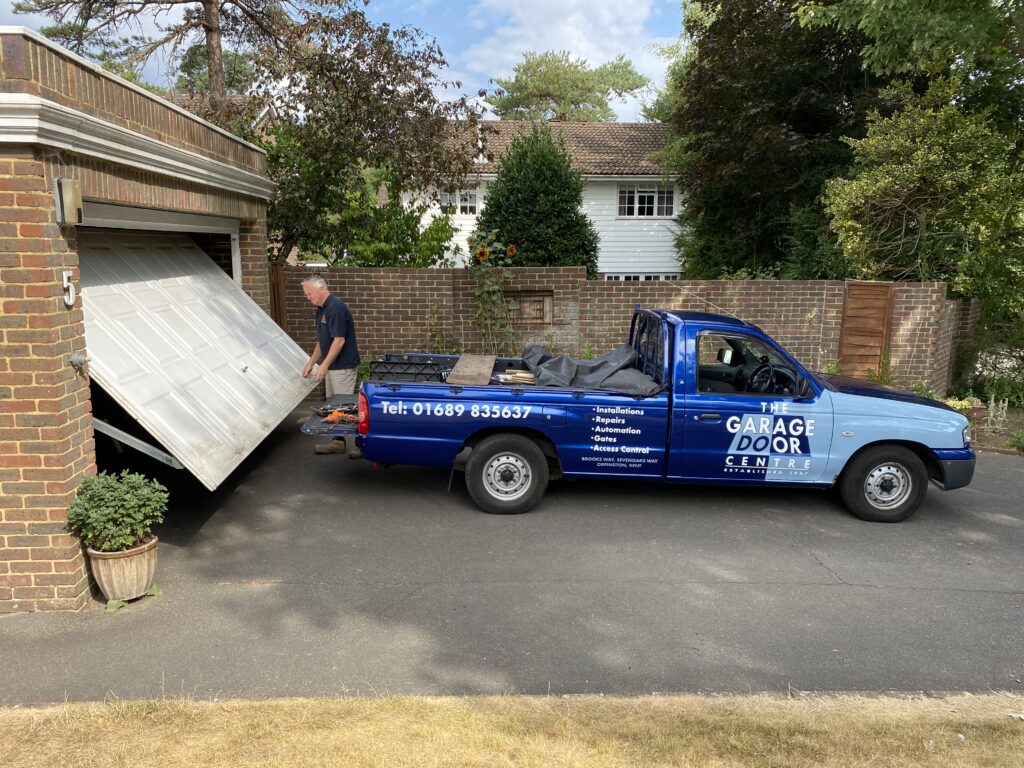
Carr reveals the largely unknown history of the British garage door further on. But before that, we must address the growing existential threat to this country’s garages: hard economics temptingly seasoned by Kirstie and Phil.
There are an estimated 10.6 million private garages in the UK. However, in 2006, the Transport Select Committee group of MPs declared itself “astonished” that over three-quarters of drivers with access to a garage overnight never used it. Today, less than one in 10 of us ever put our cars away in one, according to figures released in 2019 by the website Checkatrade.
These caverns of automotive calm are being used less and less for their intended purpose. They’re also being sized-up for monetary gain.
Loans and home insurance company Admiral has revealed that converting your garage into an additional room can add up to £45,000 to the value of a house. And as Checkatrade says the average conversion cost is £13,750 – whereas a house extension is likely to start at £25,000, even if such thing are rising in cost on a seemingly daily basis in the current climate – the impetus to bring the garage in from the cold is compelling. A few years ago, data from the Nationwide building society revealed that a single garage boosted property values by nearly 8 per cent, more than an extra bedroom or extra bathroom, or even central heating.
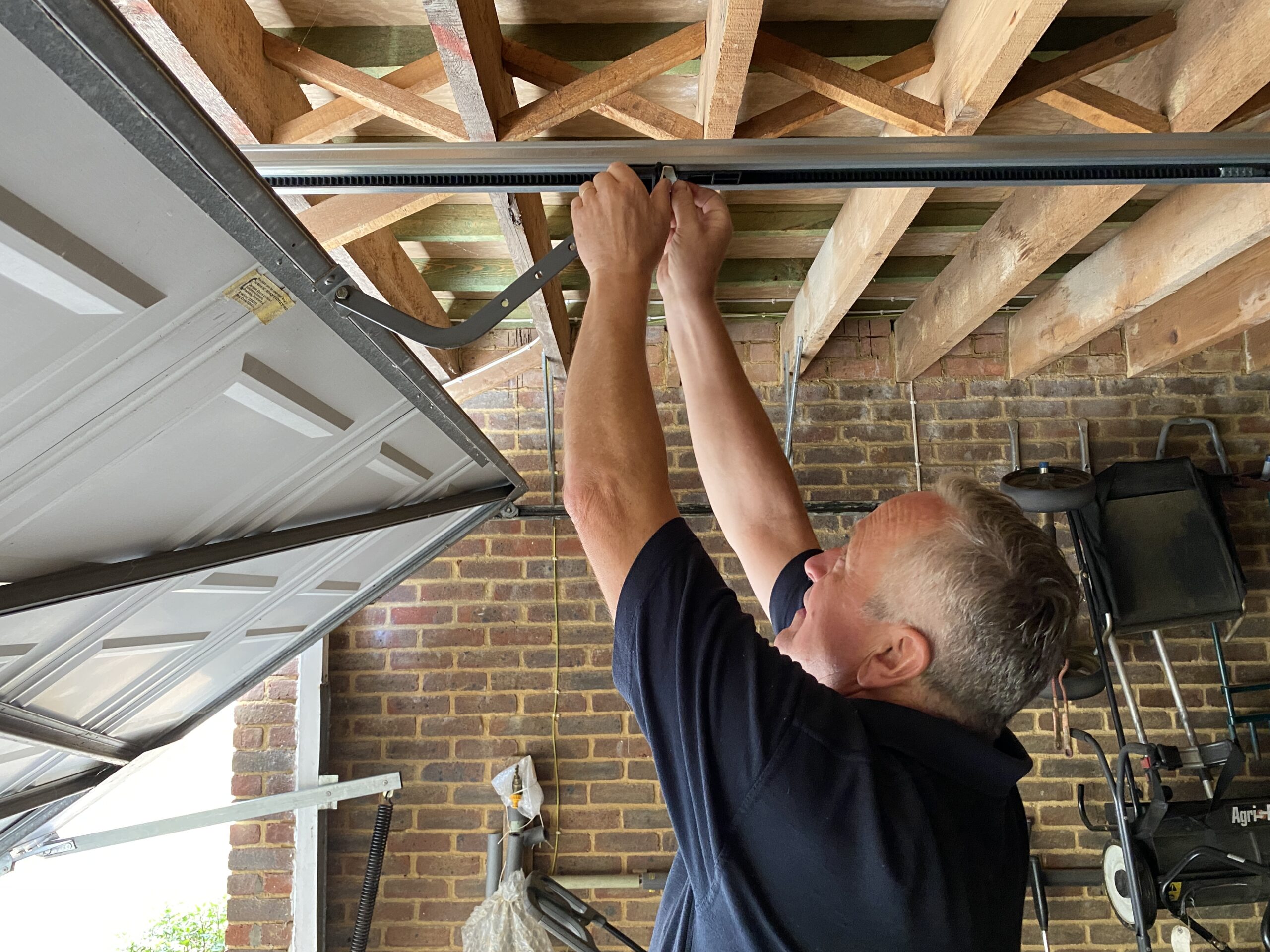
Not only that but to the chagrin of anyone trying to track down a local lock-up in which to stable an additional car, most garages are, for their owners, nothing but dumping grounds.
In 2014 the RAC found half the UK’s garages were so full of clutter that a car wouldn’t fit anyway. It also calculated there was a treasure trove waiting to be unlocked because each garage contained junk (some of us might call it ‘tools’) worth £1650 – £7.6 billion over the whole country! Little wonder that almost 5 per cent of the UK’s garages have already become playrooms, home gyms, offices or hobby-centres. The rest are under threat of being, well, redeveloped.
No-one understands this hidden, car-free environment better than Carr, who often arrives to repair or install a door only to find access nigh-on impossible.
“On my quotes I ask people to clear the garage first, but there’s almost always clutter that means I can’t start work,” he says, with a sigh. “If there ever is a car in there it’s always under cardboard boxes. Generally, it’s chaos everywhere. You can often capture that person’s mindset, or aspirations, after one quick glance, not that it’s any of my business. Garages are places where you can be yourself, and anything can evolve from that. I see unfinished projects, half-empty pots of paint that are useless, laundry, children’s toys and – dusty – press-up benches and exercise bikes. But mostly it’s garden tools, and it’s quite often a rake that’s got caught in the door and damaged it!”
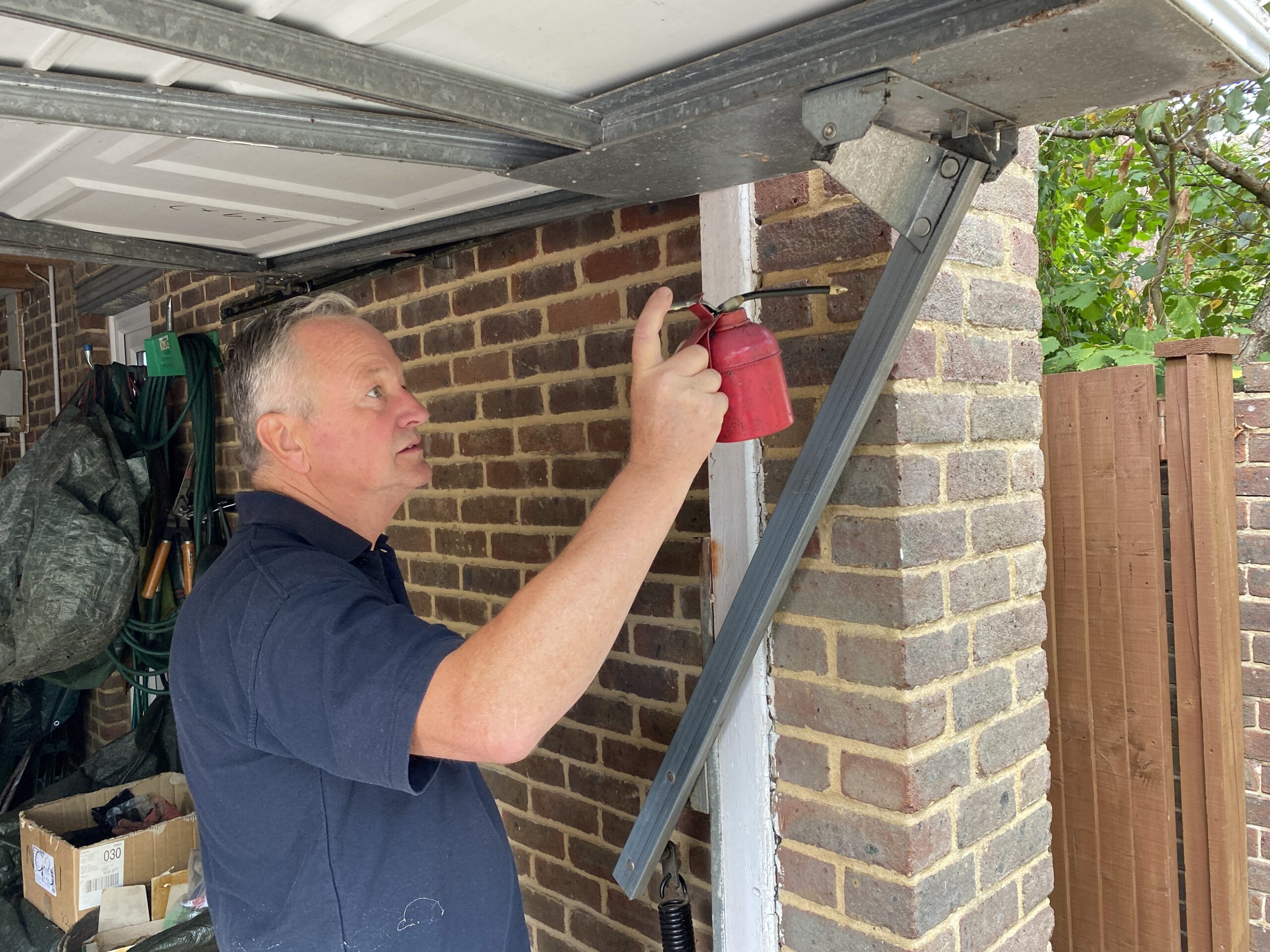
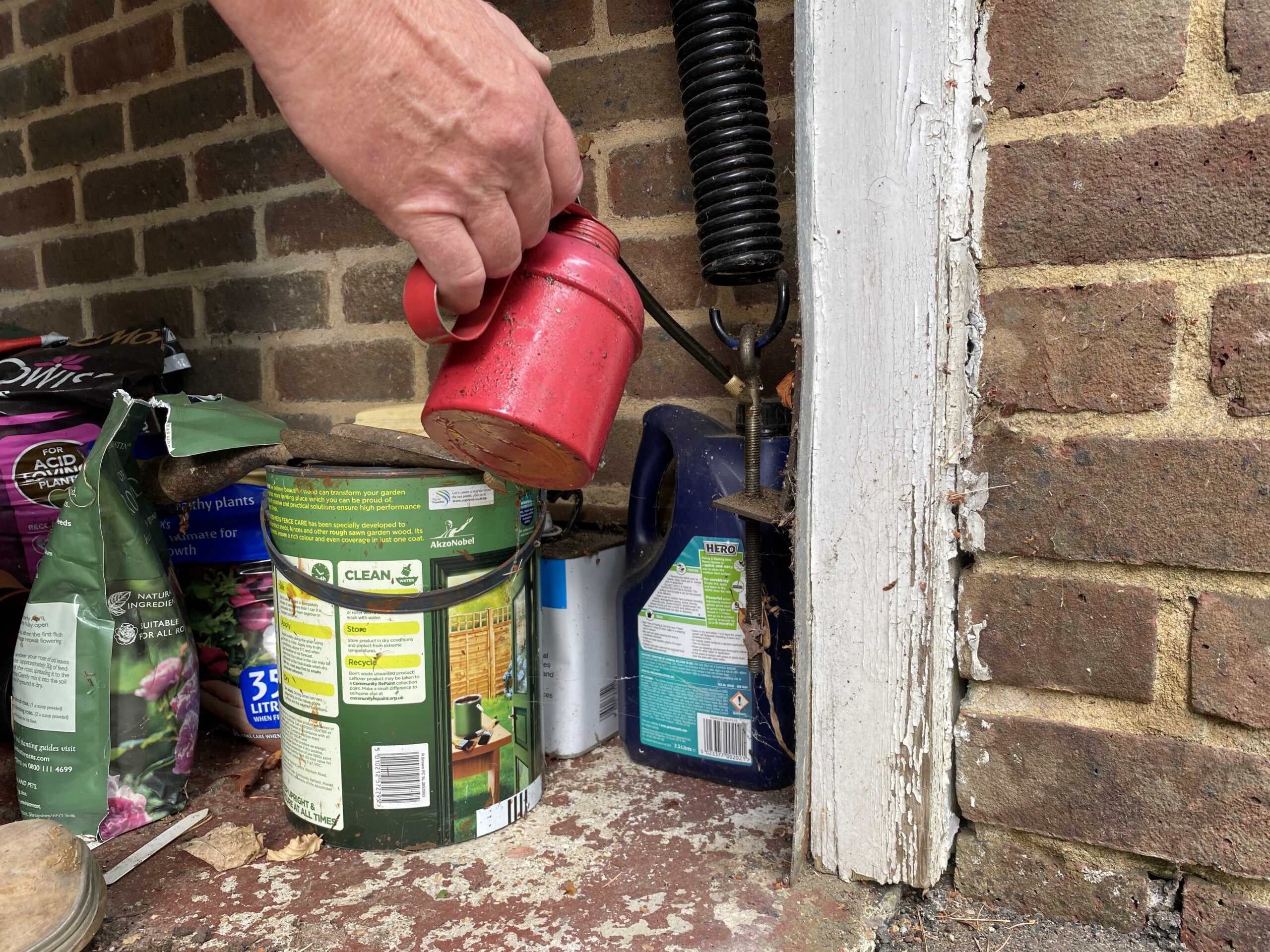
My own garage, like thousands of others, is home to our washing machine and boiler, soon-to-be-boozed booze, and stepladders. It’s the ‘cool, dark place’ that every potato and apple yearns for. And then there’s all my ‘stuff’, boxes and crates and tubs of it, stacked like amphitheatre seating around a small patch of open space where I can just about get at everything, or perform useful tasks like cleaning shoes or changing a fuse.
My car itself has never once crossed its threshold, making me an entirely typical Brit, it seems. This place will always benefit from a clear-out, but I regard the garage as my decompression chamber; one day, this humble brick chamber (with striplight and powerpoints and its own radio) could become an ideas lab; eBay provided the secondhand workbench, the tools are to hand – all it needs is for me to suddenly get the prototyping urge and we’ll be rich! Meanwhile, on a stifling summer day, I might just stand barefoot on the cool concrete floor for five minutes.
So, as you can imagine, I’d barricade myself in there rather than let this space be taken away from me and turned into a pilates studio or utility room. And that was how I got to meet Carr, who I encountered sitting in his pick-up one sunny afternoon in suburbia.
My own garage door had become increasingly rickety, to the point where I was the only person in the household with the expert touch to lift it up without it coming adrift from its tracks. It was ill-fitting and wheezed and twanged like a smoker’s chest heard through a stethoscope. And yet it was period-perfect with the house, circa 1969 – the sort of backdrop you might find in a Vauxhall Victor brochure or an episode of Bless This House. Was there any way, through old-fashioned craftsmanship, that it might be rejuvenated?
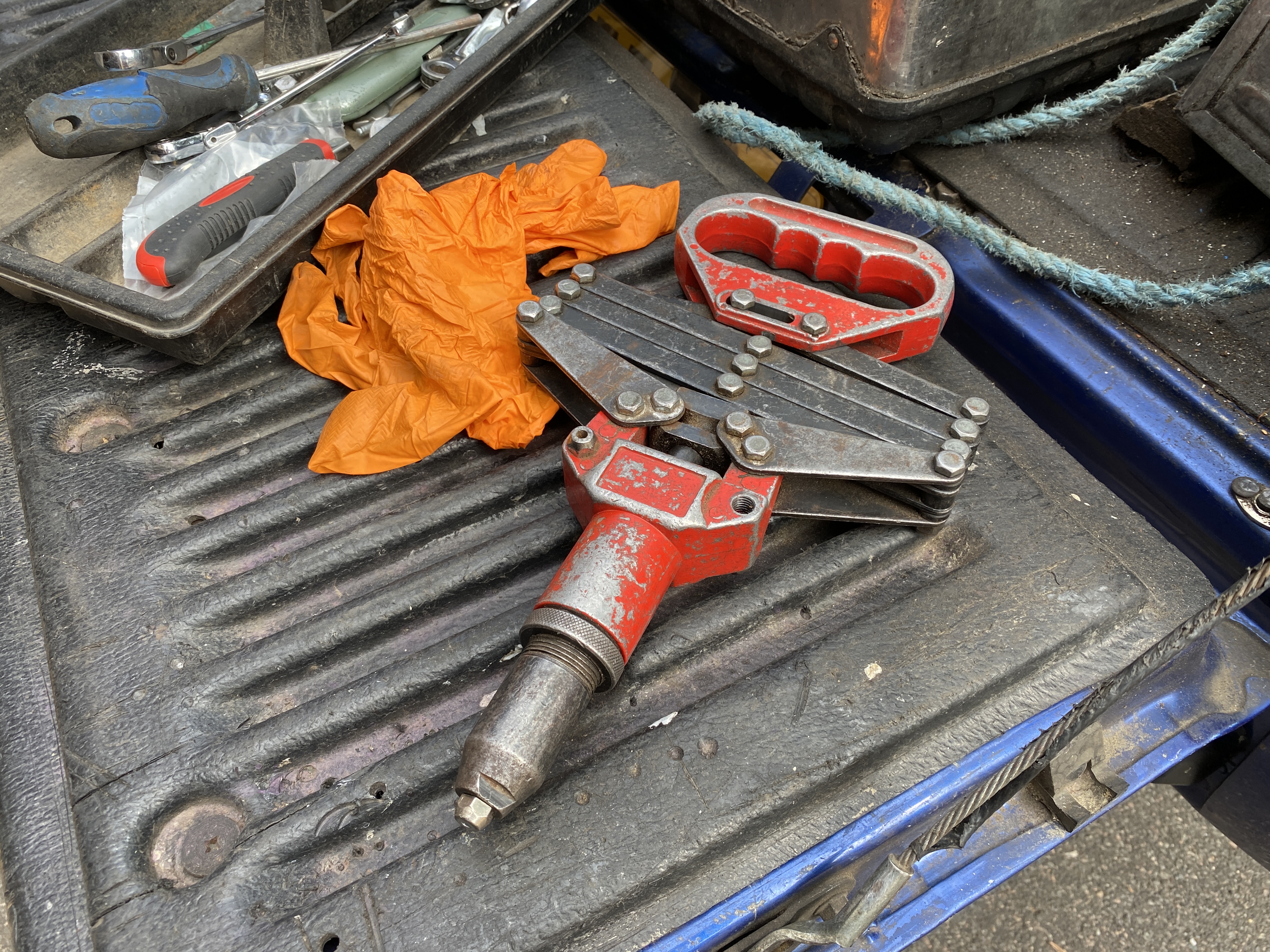
Carr came over and with his various sets of pliers and grips, and a pot of the correct lubricating grease, he set to work.
What I hadn’t realised until he pointed it out was that my steel, up-and-over single garage door is in fact an absolute classic of the genre. It’s a Westland Garador and, yes, that’s the very same Westland you might know as a helicopter. The aircraft manufacturer wanted to diversify from military hardware after the Second World War, and so in 1948 took out a licence from a Canadian firm to make liftable one-piece garage doors. In the 1950s it was the only British company making them and in 1958 opened a factory in Yeovil dedicated just to turning out ‘Garadors’. It’s still in business today.
“I think, at first, it was something for them to do to use up all their spare rivets,” chuckles Carr.
“Because it’s a single panel and it has to float up and out of the way, and not flap about in a strong wind, the Westland design uses counter-balanced weights. The locks are all mechanical and purpose-made for the doors.” Carr still has a stock of spares, and I get the distinct impression that he rather rates the simple but rugged engineering of a Garador.
Until Westland came along, most non-hinged garage doors were of the sliding variety. They were from hardwoods and glided open using swivelling pulley wheels in a track on the ground, which were mitred along their leading edges so they interlocked and kept the weather out. They were very expensive, handmade, and tended to be fitted, often matching smart front doors, to the more expensive houses in 1920s and ‘30s suburbia. The cheeky Garador disrupted this genteel world, though, and sliding-door maker Hill-Aldam was forced to join the up-and-over revolution, along with others like Henderson and Ellard. The intense rivalry in the ‘home-improvement’ craze of the 1960s and ‘70s saw factories spring up (lots around Bolton, for some reason) and costs cut. Early ones were made from cedar panels of aluminium. Sheet steel proved cheaper but was also more heavy, and so needed beefier springs.
“They all had their own, small variations, and concertina springs were one thing that was tried but abandoned because they corroded and broke too easily,” says Carr. “Cheaper coil springs with different levels of tension took over, but the problem was if they snapped it was very dangerous because the spring would shoot off into the neighbour’s garden, and the door could fall off and on to the car – or person – below. Then a whole string of companies jumped on the bandwagon. They all used the torsion spring system that runs from one side of the door to the other, which did away with weights or tension springs; the torsion spring had a much thicker coil and so it never broke.”
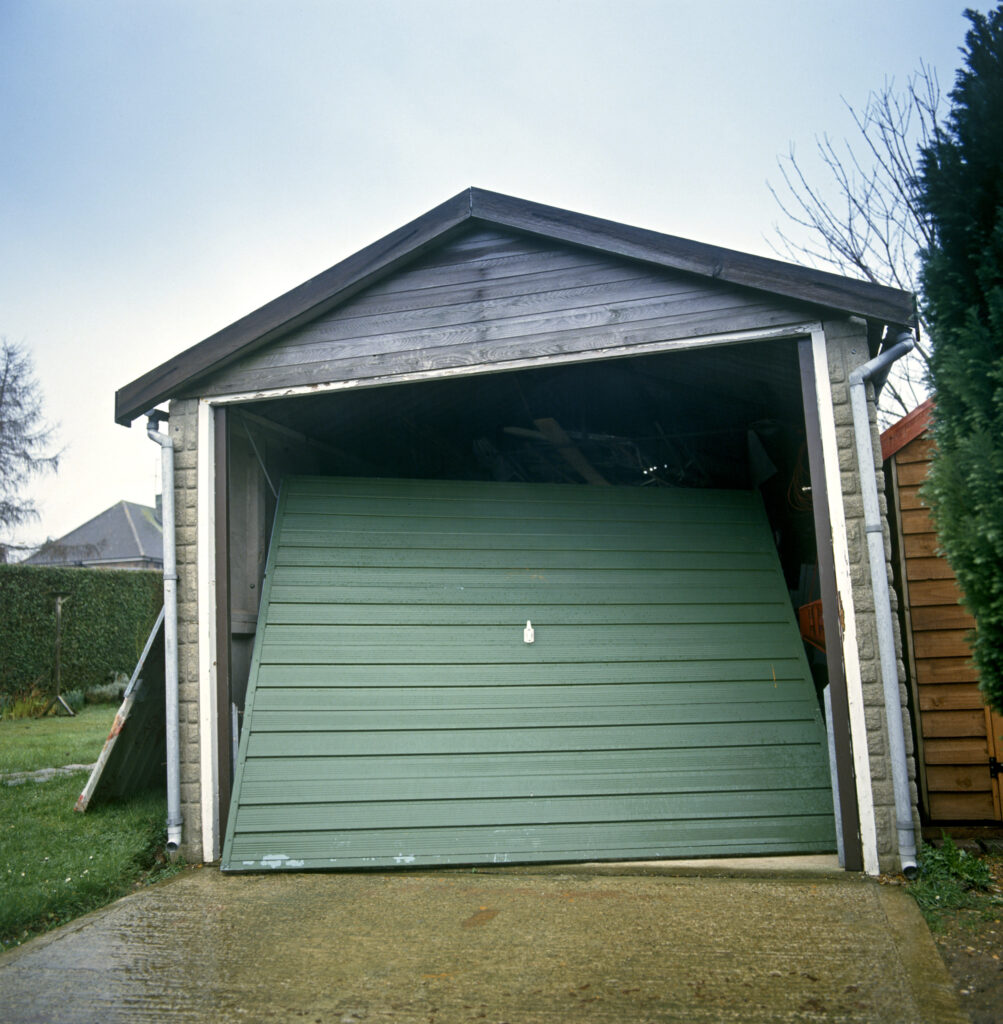
The 1960s was also the bonanza era for the kit-supplied, freestanding garage that you could assemble in your garden over a few weekends. Then, as now, planning permission was seldom needed for standard-sized garages, and there was soon a galaxy of models available from companies frequently beginning with B – Birtley, Banbury, Batley.
“People demanded an up-and-over door in these but Westland, which sold through local stockists like my dad, didn’t want to sell their doors cheaply, so the garage kit companies made their own, down to a price and so a bit sub-standard. However, their fixings were cleverly designed to fit straight into bolt holes pre-cast into the concrete sections. They were cheaply-done copies of the Garador, basically.”
The garage door, it seemed, so taken for granted as the nation’s metaphorical drawbridge, never stopped evolving. Often it was in style terms. At the end of the 1960s and early ‘70s the ‘Mock-Georgian’ housebuilding vogue was in full swing, and moulded resin glassfibre doors were developed with fake panelling that matched the elegance of Palladian door pillars (often themselves glassfibre packed with concrete), fanlights and bottle-end windows.
“It was a nationwide trend and a way to beautify houses quickly, although white was the only colour available,” Carr says. “However, direct sunlight would eventually change the colour, and they’d go yellow. So factories then brought back steel but now with an electrostatic powder coating that was kiln-dried. They were white too because you can’t really key paint on top.”
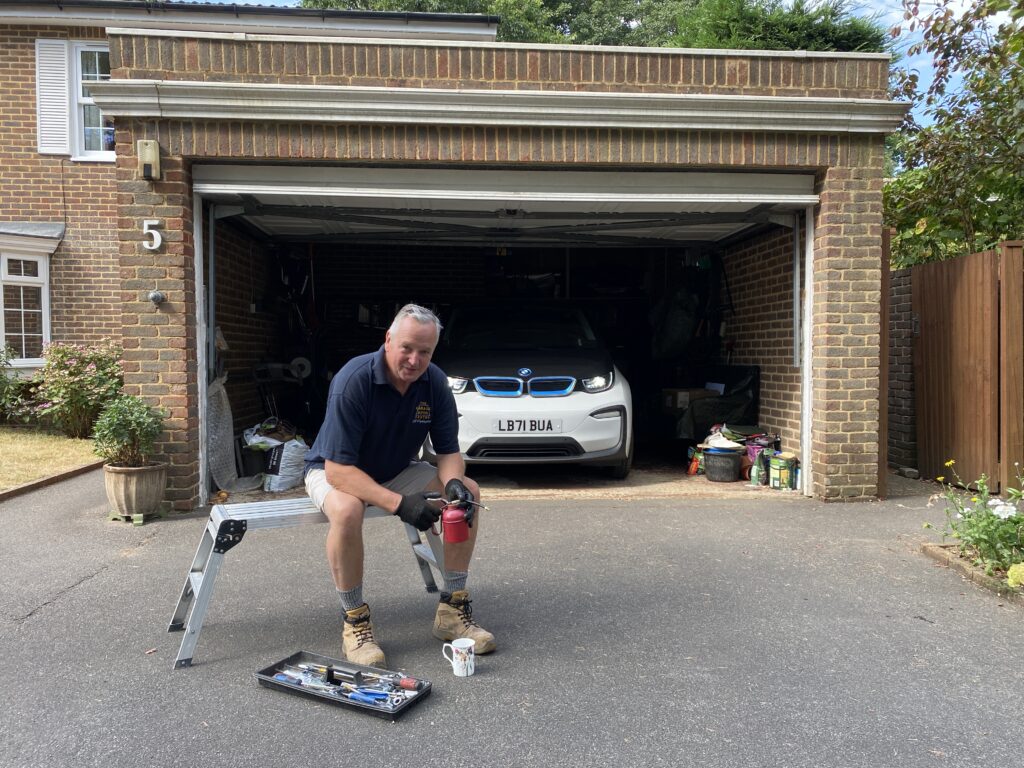
No matter what period your garage door, it can be restored rather than ripped out and replaced by firms that advertise on TV, as Carr’s sympathetic reboot of my Garador has proved. A large fortune could be saved. When he’d finished fettling mine he urged me to “go on, just open it like it was a brand new one”, which I did. There were none of the scrapes and groans I’d got accustomed to; nor did its rollers pop out of their runners, leaving the cumbersome sheet of ribbed steel dangling at an alarming skew-whiff angle. But there remain a few absolute no-nos at the intersection of the inside and outside worlds.
“If your drive slopes down to the garage then you can’t have traditional side-hung garage doors, even if the house screams out for them. And you have to be careful if you have a new drive laid with paviours. Even if the level is only very slightly higher than the garage floor then you’ll get water coming in after heavy rain. I can break out the floor and put a gulley in to fix that, although I’d rather not have to…
“There’s very little that can’t be done to save a door, and there’s some I’ve repaired that were literally falling off, or where a caved-in roof had to be fixed first, or dangerously held together using drilled coins instead of washers, or bolts rather than pivots. If a spring is rusty and it snaps it can be tremendously dangerous, not least because it’s holding up something that’s very heavy. The pivot could be used a minimum of 1500 times a year – up and down twice a day, in all weathers. People often just don’t realise these things are wearing out, just like everything does.”
Read more
Take a tour of Britain’s preserved and crumbling local petrol stations
Living in a box: The rise, fall and resurrection of the red telephone box
A sixth sense, a shaky hand and finding the sweet spot: Terry Smith reveals the secrets of signwriting








I have been told by a garage company my up and over door requires new tension springs after the fitting of new cables
My door is. garador, but I have been told the springs are no longer available.
Good you please help as I have been quoted a heavy price to supply and fit a new door
Martin, you’ll need to contact The Garage Door Centre, via https://gdcnet.co.uk/. However, they’re based in the South East.